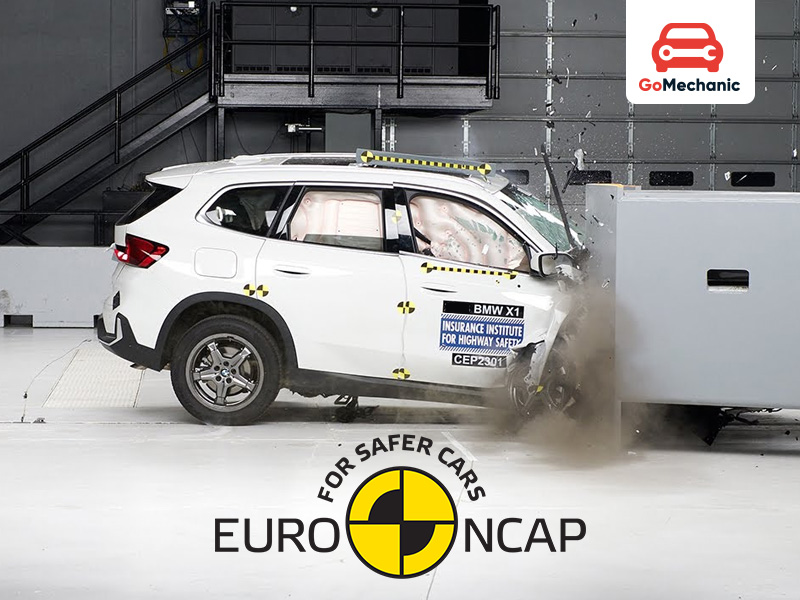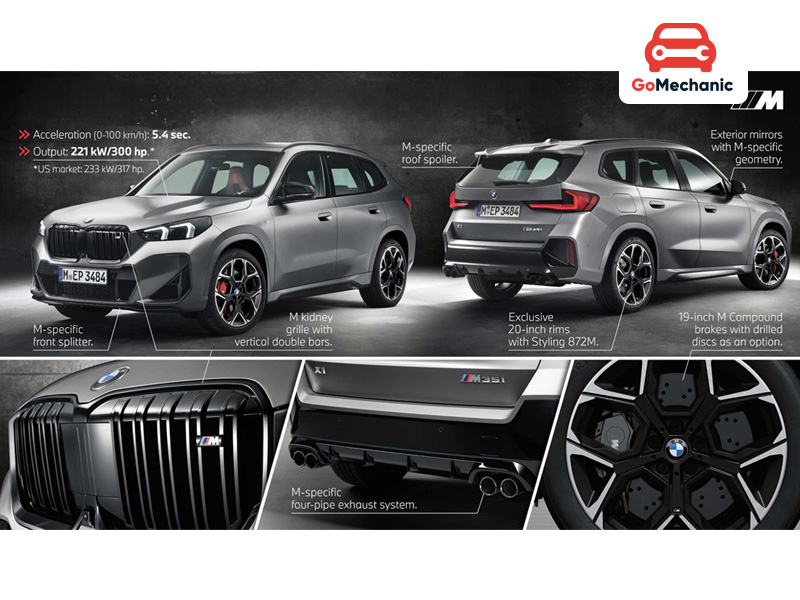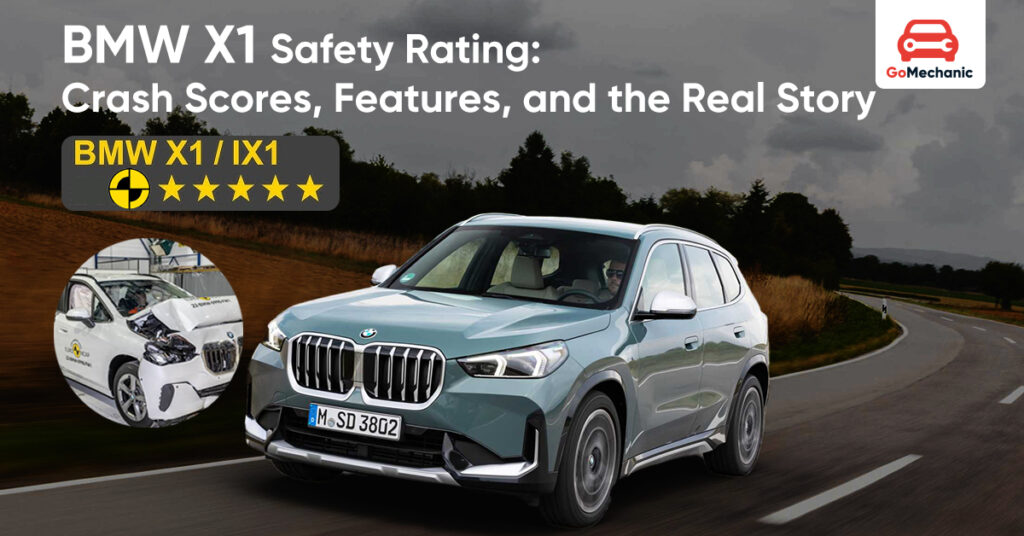When you’re in the market for a luxury compact SUV, you expect more than just plush interiors and a polished badge. You want safety, and you want assurance. You want to know that when things go wrong on the road, which often happens, you should have the confidence that you are safe. BMW X1 offers everything you need when it comes to safety. It is luxurious, advanced, premium, and above all a robust body.
In this blog, we’ll break down the BMW X1 safety rating in rich detail. We’ll explore how it performed across global crash test platforms like Euro NCAP, ANCAP, and IIHS, the tech it uses to keep you safe, and why some drivers still call it “predictable, but surprisingly sharp.” There are no soft edges here. Just the full picture.
Read More: Understanding the Ignis Safety Rating 2025: A Comprehensive Look
What is the Importance of Safety Ratings

Safety isn’t just about airbags anymore. In an age of autonomous tech and unpredictable drivers, it’s about how quickly your vehicle anticipates danger and how smartly it responds. Ratings from global bodies like Euro NCAP and IIHS are a gold standard—but numbers aren’t everything. What happens between the statistics is often where the real story lies.
BMW X1 Euro NCAP Safety Rating
The BMW X1 Euro NCAP rating is impressive—but let’s not just state the obvious 5-star badge. Let’s unpack it:
- Adult Occupant Safety: 90%
- Child Occupant Safety: 87%
- Vulnerable Road Users (Pedestrians/Cyclists): 76%
- Safety Assist Features: 77%
These aren’t just flattering percentages—they reflect how the BMW X1 performs when it matters most. It holds its structure during frontal impacts, protects passengers inside collisions, and includes proactive pedestrian protection systems.
ANCAP Safety Test Results

Australasian roads come with their own surprises—kangaroos, rural highways, sudden gravel. The ANCAP tested the X1 in 2023 and awarded:
- Overall Rating: 5 Stars
- Adult Protection: 89%
- Child Safety: 86%
- Safety Assist: 86%
The strong consistency between Euro NCAP and ANCAP results reinforces BMW’s commitment to uniform global safety.
Read More: Honda City Safety Rating 2025: All you need to know about its Global NCAP Rating
BMW X1 IIHS Results (U.S.)
If you’re on U.S. soil, it’s the Insurance Institute for Highway Safety (IIHS) that sets the benchmark. The X1 secured:
- Top Safety Pick+
- “Good” rating in all major crash tests
- “Superior” in front crash prevention (both vehicle-to-vehicle and pedestrian)
- “Good+” in child seat anchor access (LATCH system)
Not just protected—but proactive.
Real-World Performance: The Unofficial Test
BMW’s safety systems aren’t just sensors and beeps. Lane-departure warnings gently tug you back, adaptive cruise control holds your speed—and your space—and parking sensors don’t just beep, they breathe with you.
That said, some users say the steering assist can feel overbearing. It’s eager. It wants you safe—even when you’re pretty sure you’re already in control.
Safety Features: What Comes Built-In?
BMW didn’t hold back on the X1’s safety suite. Here’s what you’ll get straight out of the box:
- 6 airbags (front, side, curtain)
- ABS with EBD
- Cornering Brake Control
- Dynamic Stability Control
- Traction Control
- Hill-start Assist
- Rear-view camera & Parking Sensors
- Autonomous Emergency Braking (AEB)
- Blind Spot Detection
- Lane Keep Assist
- Forward Collision Warning
- Adaptive Cruise Control
- Driver Attention Alert
Yes, that’s a mouthful. But you’ll want every feature when you’re mid-lane change at 80 km/h on a monsoon-soaked highway.
Child Safety: ISOFIX and Beyond
Child safety in SUVs is often praised—but not always earned. Fortunately, the X1 earns it.
The ISOFIX anchors are intuitive and easy to access. IIHS even gave it a Good+ score for LATCH usability. For new parents, that ease-of-use isn’t a bonus—it’s a necessity.
Build Quality of BMW X1
 Underneath the exterior polish lies the kind of structural engineering BMW is known for. High-tensile steel, multi-stage crumple zones, and reinforced passenger cabins—all designed to absorb impact and keep you intact.
Underneath the exterior polish lies the kind of structural engineering BMW is known for. High-tensile steel, multi-stage crumple zones, and reinforced passenger cabins—all designed to absorb impact and keep you intact.
Roof strength during rollovers? Solid. That 90% adult safety score? Earned.
Check Out: Tata Nexon Safety Rating: Tata Shines yet again
Safety Tech That Thinks Ahead
Radar sensors. Forward cameras. Predictive analytics. The BMW X1 doesn’t just react—it anticipates.
Whether it’s a sudden cyclist or a distracted pedestrian on their phone, the vehicle recognizes threats before you may even notice them. That’s how it got that 76% vulnerable road user protection score—the X1 looks out for more than just its occupants.
BMW X1 vs The Competition

So, how does the BMW X1 fare against the Audi Q3, Mercedes-Benz GLA, and Volvo XC40?
- XC40 leads in pedestrian safety, but its ADAS features aren’t as refined.
- Q3 has comparable crash safety but trails in ease-of-use for child seats.
- GLA offers good crash protection, but BMW beats it in overall active safety score.
Verdict? The X1 doesn’t win on every front—but it rarely falls behind.
Final Word: Should You Trust the BMW X1’s Safety Rating?
Yes. And not just because it earned stars and stickers. The BMW X1 proves that safety isn’t a feature—it’s a system. Integrated. Intelligent. And constantly evolving.
Whether you’re ferrying kids across town or driving solo through unpredictable terrain, this is a compact SUV that keeps your well-being top of mind—even when you’re not thinking about it.
And sometimes, that’s the safest feeling of all.

